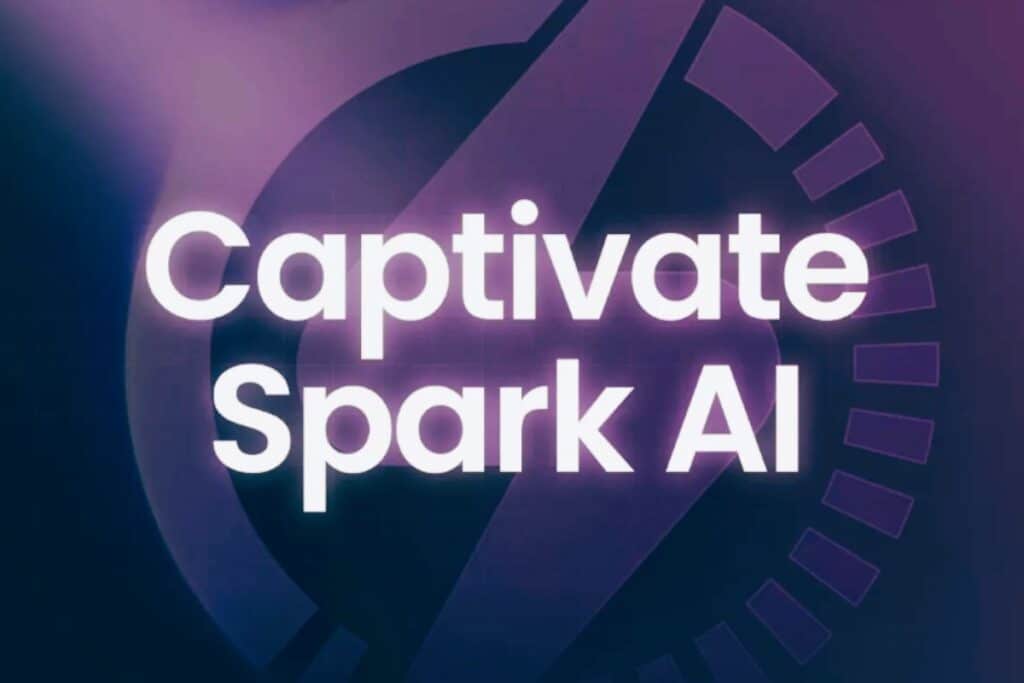In training and education, assessments are split into two types: formative and summative.
And for the most part, we don’t bother to consider the type of assessment we’re completing as part of a course. In fact, for a student, it doesn’t really matter if we know if an assessment is formally called ‘formative’ or ‘summative.’ We just need to know that we’re taking an assessment and why we’re taking that assessment.
For a teacher, however, knowing about formative and summative assessments is important. We need to know why we’re testing our students and what those assessments mean for the outcome of a course. Does the student need to pass a certain assessment to gain a certificate and pass the course? Or are they just taking the assessment for a bit of fun and to see how much they’ve learned?
As the teacher of an online course, it’s important that you know why you’re putting an assessment in place.
But knowing the difference between a formative and summative assessment can be confusing. And knowing how to integrate either type of assessment into an online course can be even more confusing. So, in this post, we will break down the formative vs summative assessment question and discuss how both types of assessment can be integrated into your online course.
Formative vs summative assessment: what is the difference?
Formative assessments tend to be ongoing and do not count towards a final grade. They can include presentations, group work, question and answer sessions and simulated activities.
Summative assessments can include the same assessments as formative. Examples of summative assessments include formal exams, essays and other work. This work is graded and counted towards a mark or grade, usually resulting in the passing or failure of an assessment.
In your online course, you might use formative or summative assessments. You might even use both. It depends entirely on you, your course, and what your students expect from your course.
Using formative assessments in an online course
As we’ve already covered, a formative assessment is an assessment that does not count towards a final grade.
For your online course, this means that activities such as quizzes can be a formative assessment. The mark from these quizzes helps your students to see where their knowledge is at.
Depending on their results, you might encourage your students may go back over some of the course.
You don’t have to deliver this encouragement face-to-face. At the end of a quiz, you might want to leave a message that if the student got a certain score they may want to revisit certain course content. You might also offer the option for them to contact you or engage in a forum, such as a Facebook group.
Examples of formative assessments in an online course
- Quizzes
- Group work i.e. in breakout rooms
- Question and answer sessions during a live teaching session
Using summative assessments in an online course
A summative assessment is an assessment that counts towards a final course grade. Ultimately, a summative assessment helps decide if you pass or fail a course.
Not every online course will include a summative assessment, but if you’re issuing certificates, or need to prove that you’re meeting certain criteria, you might want to include a summative assessment in your online course.
Examples of summative assessments in an online course
- Graded assessment
- Multiple-choice assessment
- Written questions and answers
- Essays
Do I have to assess my students in my online course?
No! Of course not!
It’s your course and you can choose to include assessments, but only if you’d like to.
Assessments can have many benefits, but they need to add value to the course. An assessment plonked in the middle of a course for the sake of it won’t add value to your course. And your students won’t be happy about that.
If you do include an assessment, explain why.
Explain that the purpose is for you to see how they’re getting on. Or that you want to highlight parts of the course that students might want to revisit. You could even set an assessment to unlock a certificate if the student gets a final minimum pass mark.
Whatever your reason for assessing your student, make sure that the assessment adds value.
The principles of assessment
When creating assessments, there are 3 cardinal principles to stick to:
- Is the assessment fair?
- Is the assessment valid?
- Is the assessment reliable?
It is essential that assessments are fair, valid, and reliable. Assessing in this way will help provide your students with a sense of safety and security whilst learning and completing your online course.
Let’s look at the principles of assessment a little more closely.
Is the assessment fair?
Assessments should always be fair. This means that all of your students have the same opportunity to access and pass the assessment.
Ways to make your assessments fair
- Include instructions for how to access and complete the assessment in your online course
- Make sure that all students can access the assessment
- Ensure that you have given your students the information that they need to succeed in the assessment
Is the assessment valid?
A valid assessment means that you are assessing against your online course’s learning outcomes.
What this means is that you aren’t assessing your students on something you haven’t taught them. That isn’t fair and invalidates your assessment. When creating your assessment, you should have your learning outcomes in front of you. Decide which learning outcomes you are testing and create your questions based on these outcomes.
Let’s look at an example of this learning outcome: ‘By the end of this course, you will be able to explain how to create a Facebook Group.’
A good question to assess this learning outcome might be:
- What is the difference between a Facebook Group and a Facebook Page?
Students can then select the correct answer from a set of choices.
A poor example of a question to assess this learning outcome would be:
- Explain why Twitter is better than having a Facebook Group?
This question has nothing to do with meeting the learning outcome of the course and will only confuse your students. It’s therefore important to make sure that your assessment questions match up to your learning outcomes to test that your students have learned what you have told them they will learn.
Ways to make your assessments valid
- Make sure that your assessment tasks/questions relate to your learning outcomes
- Ensure that what you are assessing your student on has been covered during the online course
Is the assessment reliable?
A reliable assessment is one that gives the same results for each student completing the assessment.
What this means is that you are giving the same assessment to each one of your students. It is ok to have a wide selection of questions that are randomly assigned to each student. But the overall question bank needs to be the same for each student. For example, you might have a selection of 20 questions, but students are only tested on a random selection of 10 of these questions. This is fine, but you have to make sure that the same 20 questions are available to all students.
LearnWorlds offer this feature within their question banks. You can create a question bank of however many questions you want. When you create a quiz (either for formative or summative assessment), you select how many of these questions you would like randomly selected to test your students. The assessment is reliable because even though the complement of assessment questions can change from student to student, the pool of questions from which the randomly selected questions are being selected remains the same.
Ways to make your assessments reliable
- Use online quiz functions in your online course. Input the answers and set a pass mark so students know what is expected of them. Tell students what the pass mark is before they start the assessment so they know what they are aiming for. And no, you don’t have to include a pass mark if you don’t want too. But, if you’re issuing a certificate at the end of the course, you might want to include a pass mark so you are assured that your students have met your learning outcomes.
Holistic assessment
When creating an assessment, holistic assessments are a great way to go.
A holistic assessment is when you consider the bigger picture of the assessment.
For example, having a quiz assessing theoretical knowledge isn’t necessarily useful to your student. But, having a quiz where your student needs to apply their knowledge to a scenario is holistic. Applying knowledge to a scenario helps students contextualise what they have learned.
As the teacher, if the student is struggling to apply what you have taught them to a scenario, you might need to rethink how you taught that section of your course.
An example of online holistic assessments
A great example of holistic assessments is the LinkedIn Skills Assessments. The questions asked to apply your knowledge to particular scenarios. This means that as a student you can demonstrate your knowledge in the context of the skill you’re being assessed on.
This type of assessment allows LinkedIn to identify not only how much you know about a topic, but also if you can apply that information. Once you achieve a certain pass mark, LinkedIn verifies the skill on your profile.
Peer and self-assessment
Peer assessments and self-assessments are brilliant tools to use in your online course.
The benefits of peer and self-assessment in online courses are:
- Encouraging your students to become more involved in their assessment
- Help your students to better understand their assessment
- Ensure that students understand what they are being assessed on during their assessment
- Giving students a sense of ownership of their assessment
- Helping students to better engage with the assessment process
You can use peer and self-assessment for formative and summative assessments.
Ways of using peer and self-assessments in your online course
- Encourage your students to reflect on what they have learned so far in the course. Get them to write a short piece about what they have learned and share this with you or other students.
- Have students take a practice assessment before a final online assessment. Design a quiz which has similar questions to a final assessment. Ensure that students have access to the correct answers after the quiz so they can see what they need to revise.
- Get students to gain feedback from other students. For example, in a Pinterest course, have students design pins, put them on a Facebook group, and then get feedback from other students about their pin designs.
Conclusion
In conclusion, formative and summative assessments are two types of assessment within teaching:
Formative assessment
A formative assessment is ongoing and does not count towards a final course grade.
Summative assessment
A summative assessment counts towards a final course grade and can mean the difference between passing and failing a course.
Whilst including an assessment in your online course might sound very formal, it doesn’t have to be. Assessments can be used in online courses in the form of quizzes and games which help your student see how much they have learned. Assessments also help you see which parts of your online course might need improving. For example, if students are constantly getting the same questions wrong in a quiz, you might want to revise the section of your course where this information is taught.
Whichever form of assessment your choose to use (formative or summative), know that there is normally no ‘right option.’ Your choice of assessment should fit your online course and bring value to your students’ learning. And above all else, assessments need to be valid, reliable, and fair.





